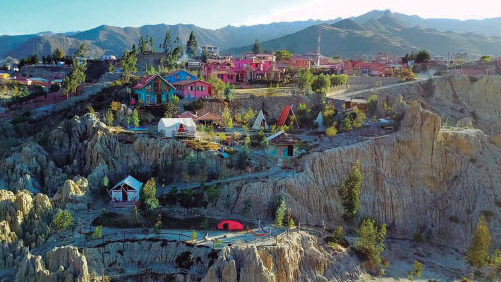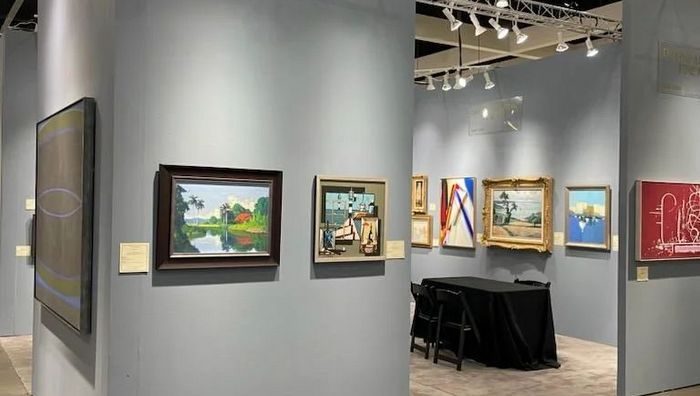It’s understood that Rene Francisco interprets in many ways, as if his doing allowed him to cover with just one stroke several meanings of such an expansive verb. On one hand, there-s no doubt that he conceives and expresses reality “in a personal manner –that’s testified by hundreds of paintings, drawings, installations, assembles, engravings in graphic materials and video tapes. Rene also explains –“explain”, let’s say, in the suggestive way in which his art enlightens us over Malevich, the Suprematism, the junks, the aluminum pipes, the little paper flags and the wooden dummies, among other facts, objects and characters compiled in his extensive and motley catalog– the sense of “actions, sayings or developments.” And in addition to all of the above –I continue reviewing the meanings of the verb to interpret– Rene Francisco translates “from one tongue to another.” The latter meaning, to interpret as a translator, implies fluency in different languages and ability to place oneself as an intermediary between groups or individuals that could otherwise go through a hard time when trying to communicate with each other, unless that intermediary figure shows up.
The interpreter is someone who can move swiftly between two different languages
The interpreter is someone who can move swiftly between two different languages. To achieve that, he or she should negotiate distances –sometimes construed as distrusts– between the two cultural fields that both languages cover, describe and define. What are those fields in this case? And what are the different languages spoken in each zone? On the one hand, the “art territory” in society, what some have just defined as the “social ambience of art” with a unique fabric of guidelines and conventions, as well as self-reference communication codes. On the other hand, stands the vast and rugged area of the overall society, everything that exists beyond the atmosphere regulated and dominated by art.
The multilingual skills of the artist-interpreter, so adapted to move swiftly between two different languages, calls on the kind of “cultural fluency” that must characterize the kind of creator defined by Joseph Kosuth back in the 1970s. In his essay “The Artist as an Anthropologist” (1975), Kosuth wrote about an artist model that operates
within the same socio-cultural framework he or she has evolved in. He’s immersed lock, stock and barrel in it and exerts a social influence on it. His activities incarnate culture [...] For the artist, achieving cultural fluency is a dialectical process that, put in a simple way, consists of trying to exert influence on culture while learning from it at the same time, always seeking to be recognized by that same culture that also exerts influence on him or her. An artist’s success is sized up in terms of his or her own praxis.
For several years, while exploring the mediating possibilities reserved for the interpreter –a vision incorporated to his concept of pedagogy and always present in the remarkable contributions he’s made to the teaching of art– Rene Francisco has been acting as an artist-anthropologist, a creator who’s plunged into a cultural trend that drags him away and that, in spite of all that, manages to lead him in his own practice. Out of these experiences, a number of projects dealing with controversial artists –sometimes prickly– within the Cuban society of the past decades has arisen. The artist rereads the history and scours the cityscape to dust off so many plots that once fell by the wayside or were discarded along the way, where vulnerable characters, rundown buildings and neglected neighborhood come together as one. The work culled by him in so many tours and living experiences in some of Havana’s worst-stricken areas –he also collects information on material poverty and heart-wrenching spiritual episodes he attempts to ease with his art– Rene attains a cultural and linguistic fluency that stretches out onto his artworks to put them on one-and-only social ground, both a singular and shaky territory.
Vancouver, Feb. 2009



Related Publications

How Harumi Yamaguchi invented the modern woman in Japan
March 16, 2022
Giovanni Duarte and an orchestra capable of everything
August 26, 2020











